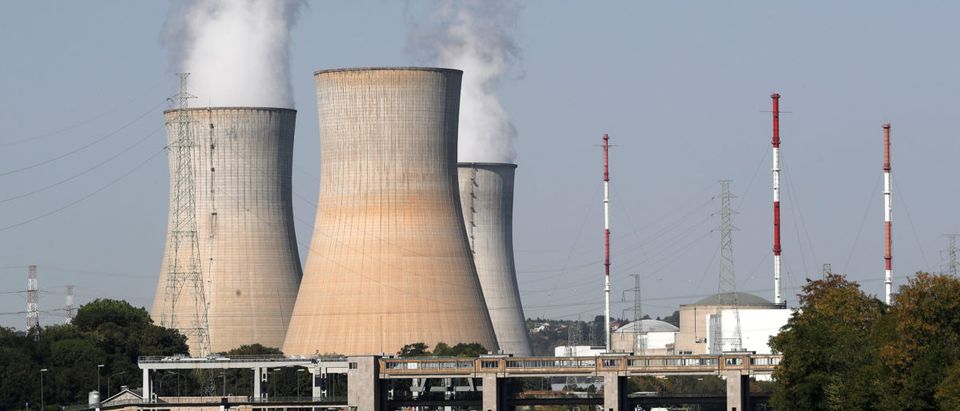As Hurricane Florence inches closer to the U.S., environmentalists are sounding the alarm on a nuclear power plant in North Carolina they believe is vulnerable.
Hurricane Florence, a Category 4 storm, is expected to make landfall Thursday and pummel the East Coast with extreme winds and shower land with up to 40 inches of rain. More than 1 million people in Virginia and the Carolinas are in mandatory evacuation zones. As residents board up their homes and begin to flee, utility companies are also preparing for the storm’s wrath.
At the center of attention is the Brunswick Nuclear Generating Station, a nuclear power plant in Brunswick County, North Carolina, that sits just a few miles away from the coast.
“Flooding-prone Brunswick Nuclear Plant among rickety old Fukushima-style reactors in likely path of Hurricane Florence,” tweeted Scott Stapf, a senior principal with the Hastings Group, a consulting firm that covers environmental issues. Stapf was far from the only one to suggest Brunswick was vulnerable to Florence’s wrath. Gregg Levine, a reporter for the liberal outlet The Nation, also made an arbitrary comparison to Japan’s Fukushima plant.
The warnings fall in line with long-held calls from environmentalists who believe nuclear energy is dangerous. Despite its zero-emissions and studies deeming it the safest source of energy, organizations such as Sierra Club and Friends of the Earth claim nuclear plants are susceptible to accidents, leaking dangerous radiation in the process. Greenpeace, for example, smashed a Superman-shape drone into a nuclear plant in June as a symbolic gesture to demonstrate the facility’s vulnerability.
However, a spokesperson for Duke Energy, the owner and operator of Brunswick, painted a very different picture of the plant’s safety.
“Nuclear plants are probably the most robust structures in the United States. The building that houses the reactors is several feet of reinforced concrete and its engineered to withstand a lot of extreme natural events like hurricanes, tornadoes, earthquakes and stuff like that. There’s also a steel liner in it as well,” Mary Kathryn Green, Duke Energy’s community relations manager, said to The Daily Caller News Foundation. (RELATED: MIT Study Finds Nuclear Energy To Be Essential In Reducing Pollution)
Green went into detail on how all of its nuclear facilities follow similar procedures when a storm nears, aided by the company’s emergency response organization located at the sites. Regulatory standards require nuclear plants shut down at least two hours before winds near the site go above or reach 73 mph.
Industry experts also pointed to historical precedence as proof of nuclear’s safety.
“Our industry’s performance during extraordinary weather phenomena is extensive and notable – whether it’s with Hurricane Katrina (Cat 5), Hurricane Andrew (Cat 5, and the eye passed directly over Turkey Point), Superstorm Sandy, or floods or the 2011 East Coast earthquake,” Nuclear Energy Institute spokesman John Keeley wrote to TheDCNF.
Keeley also directed TheDCNF to the Nuclear Energy Institute’s extensive list of powerful hurricanes that have struck since the 1990s and how nuclear plants safely responded to their impact. Since its inception in 1975, the Brunswick Generating Station’s safety has never been exposed by a hurricane.
Follow Jason on Twitter.
All content created by the Daily Caller News Foundation, an independent and nonpartisan newswire service, is available without charge to any legitimate news publisher that can provide a large audience. All republished articles must include our logo, our reporter’s byline and their DCNF affiliation. For any questions about our guidelines or partnering with us, please contact licensing@dailycallernewsfoundation.org.












